To say the past year has been monumental for the NFT ecosystem would be an understatement. We witnessed the birth of the NFT bull-run with the demand for profile-pic (PFP) collections like the Crypto Punks and Bored Ape Yacht Club (BAYC) hitting record-breaking sales every other week. We also saw widespread adoption with artists, music artists, games, brands, and metaverse projects launching their NFT products.
While the NFT bull-run was predominantly on the Ethereum blockchain- traders, gamers, and hodlers found it becoming increasingly difficult to transact on the blockchain due to its high gas fees. NFT enthusiasts hoping to get into a project at mint had to engage in gas wars, sometimes paying double or more the cost of mint in gas to secure an NFT. Most gamers and games on the Ethereum blockchain could no longer be profitable as on-chain games require many transaction approvals, resulting in inflated gas costs.
This was a serious problem that needed solving, and that’s exactly what led to the creation of Immutable X, a layer-2 scaling solution on Ethereum for NFTs. When it comes to concerns about gas fees, Immutable X boasts of a zero-gas fee layer 2 solution. In this article, we shall be diving into what exactly Immutable X does and how it compares to the other Layer 2 solutions in the market.
What is Immutable X?
Immutable X is a layer 2 scaling solution for Ethereum. It is an open-source ZK Rollup protocol built with the vision of facilitating a gas-free NFT ecosystem that allows users to build and develop their own decentralized apps, such as games and marketplaces. It can facilitate up to 9000 transactions per second while still leveraging Ethereum’s security and network effect.
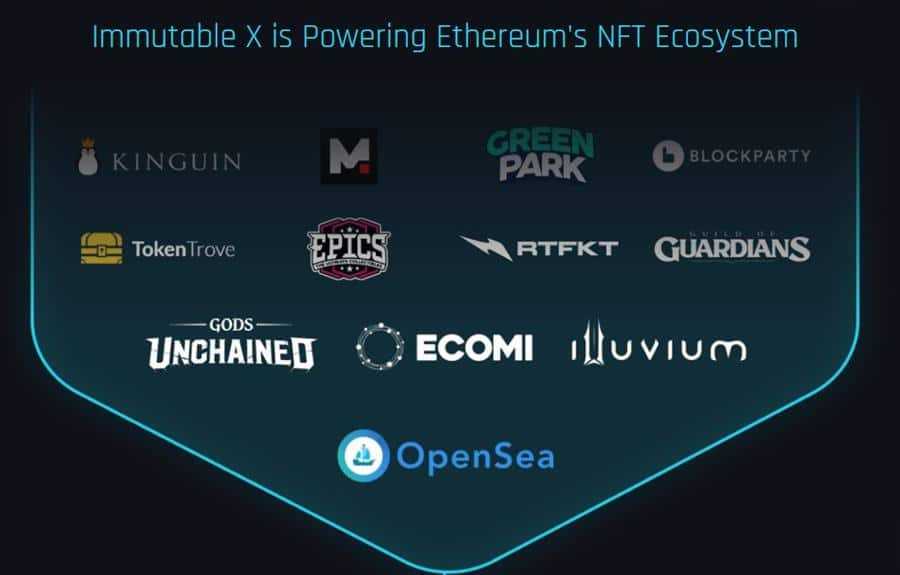
In December 2023, the company massively simplified the sign-up process for players through the launch of Immutable Passport, which provides players with a universal profile that enables them to carry their identity, achievements, and digital assets across different online games and marketplaces.
Five web3 games and marketplaces — Gods Unchained, Blocklete Golf, Bleacher Report Watch2Earn, TokenTrove and AtomicHub — have already integrated Immutable Passport, which aims to address a crypto-gaming pain point that has affected its mainstream adoption.
Immutable X Architecture
Immutable X is a layer-2 open-source protocol that is highly scalable and easy to build, use and trade on due to the integration of four core components in its architecture, namely:
- StarkEx ZK Rollup Technology – StarkWare’s proprietary ZK Rollup technology that utilizes ZK-STARK instead of ZK-SNARK
- APIs and SDKs – Immutable X’s developer and partner-focused tools that enable easy onboarding and development with the Immutable X protocol.
- Immutable X Link – The trustless intermediate layer of the protocol
- Immutable X Marketplace – The default trade platform for the Immutable X protocol
Let us look at each of these components in depth.
StarkEx’s ZK Rollup Technology
Immutable X solves the scalability problem of Ethereum by utilizing the ZK Rollup technology for its layer-2 protocol. To be more precise, it uses StarkEx, a proprietary ZK rollup system that utilizes ZK-STARK for proof instead of ZK-SNARK.
"The Ethereum ecosystem is likely to be all-in on rollups as a scaling strategy for the near and mid-term future.” Vitalik Buterin, Co-founder of Ethereum
If you got lost in that word-web, fear not, I shall break it all down so we can understand better. Let’s start by addressing what a ZK Roll up is.
What is ZK Rollups?
The technical definition of Zero-Knowledge Rollup (ZK Rollup) is that it’s a layer-2 solution that bundles hundreds of transactions into one, which is then separated by smart contracts to verify each transaction.
To give a relatable and simplified example, think of it like this- consider ‘Ethereum’ to be a notebook in which you can write by hand up to 15 lines (i.e., transactions) on a page, whereas a ZK rollup protocol is a typewriter collecting and printing many lines on a single long sheet of paper. This long sheet of paper is then rolled up and pasted within the space of a single line on a page in the Ethereum notebook. This effectively enters and validates all the transactions present on the long sheet of paper within the space (computational energy) required for a single transaction on the main Ethereum network. This advanced method significantly lowers the storage and computational demand in validating blocks, providing cost-efficiency and greener execution for blockchain transactions.
But to enable the acceptance of this ‘batching’ of transactions on a roll-up, we need to submit proof (also called a Zero-Knowledge Proof) to show its validity. Traditionally, ZK rollups use a ZK-SNARK (Succinct Non-Interactive Argument of Knowledge). However, Immutable X utilizes a proprietary ZK proof model called ZK-STARK (Scalable Transparent Argument of Knowledge). What’s the difference you ask? Let me tell you.
ZK-STARK vs ZK-SNARK
While both ZK-STARK and ZK-SNARK are Zero-Knowledge proofs, the way they achieve this is different. There are two core components in a Zero-Knowledge proof- the Prover and the Verifier. The Prover refers to the one who provides ‘proof’ for the validity of the batched-up transactions. The Verifier refers to the smart contract on the main chain which verifies the mathematical veracity of the proof submitted.
Now, this is where a ZK-STARK or ZK-SNARK comes into the picture. A ZK-STARK or ZK-SNARK refers to the way this proof is created.
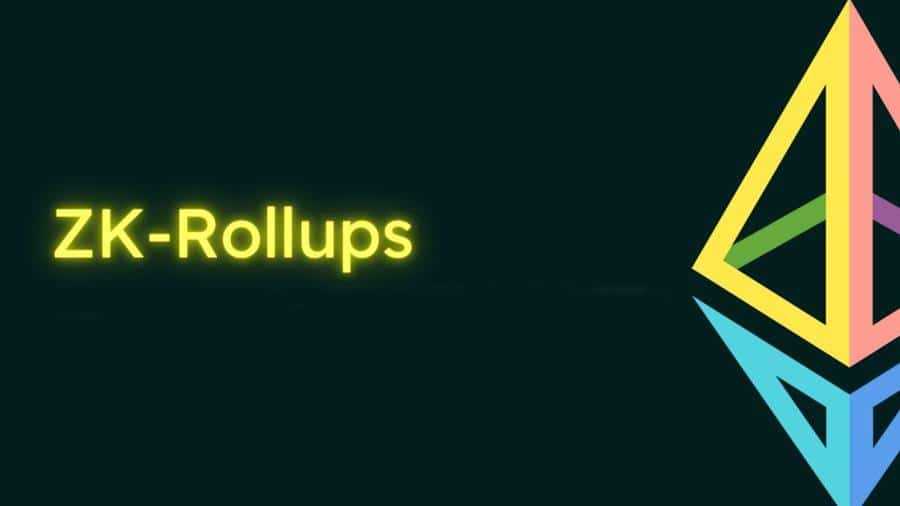
In a ZK-SNARK, the prover utilizes a pre-determined complex system (think of it as a handbook) for generating the cryptographic encryption of the proof. This means that all the proofs generated by a particular ZK-SNARK follow the same complex cryptographic system. While these systems are extremely complex for existing modern-day computing systems to solve, they are also equally hard to debug. This was seen first-hand by Zcash when a bug in its ZK-SNARK allowed anyone to mint counterfeit copies of its cryptocurrencies out of thin air.
In a ZK-STARK, the prover encrypts the proof with a function of randomness. There is no pre-determined system (i.e., handbook/set of instructions) that the prover follows for encrypting the data for the proof. This means that ZK-STARK is less complex and more transparent when it comes to the proof generated, which makes them more scalable in terms of speed and computational size compared to ZK-SNARKs.
So, what does this mean?
- In terms of security, the ZK-STARK is more reliable as there is no need to worry about the method of encryption being compromised as there is an element of randomness in it. Whereas in a ZK-SNARK, there is a risk of the trusted pre-determined complex system (i.e handbook) being compromised. This allows for bad actors to use this compromised encryption system to create fake proofs and submit them on-chain.
- Secondly, also concerning security, ZK-STARK is inherently more resistant to quantum computing attacks due to the randomness function in their encryption when compared to ZK-SNARK which bases the security of its encryption solely on the complexity of the system it follows.
- In terms of scalability, the speed and computational scaling capabilities of ZK-STARK are higher than ZK-SNARK over the long term.
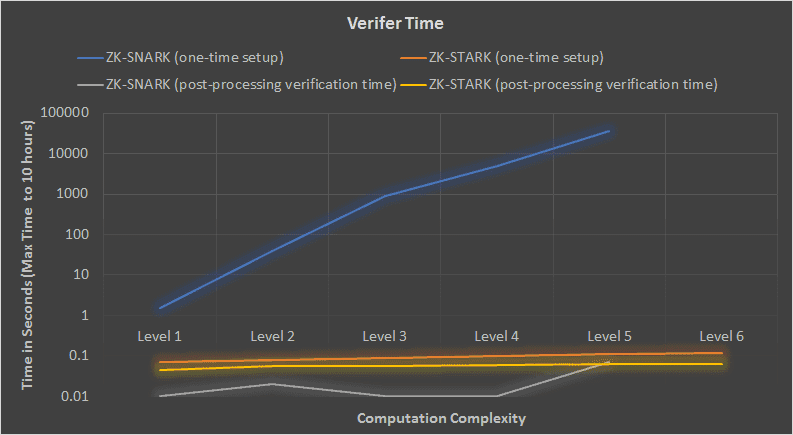
There is one noteworthy tradeoff that comes with using ZK-STARK instead of ZK-SNARK; STARK proofs are larger and cost more to publish on-chain. However, the Immutable X team considers this a reasonable tradeoff for the increased user security that the ZK-STARK system offers. If you’re looking for a more in-depth technical explanation of the differences between ZK-SNARK and ZK-STARK, I’d suggest checking out this medium article by Adam Luciano.
APIs and SDKs
Immutable X prioritizes developer and user on-boarding, this can be seen from their APIs and Platform SDK options for developers and partners. They wrap their ZK rollup system in a set of robust REST APIs to enable building NFT applications easier. Every activity on Immutable X is as simple as an API call, from minting to trading to transferring. Converting sophisticated asynchronous blockchain interactions, which can take minutes or hours, into synchronous REST API calls is a powerful enhancement to current blockchain development paradigms. New participants in the field, such as existing gaming and multimedia firms, can develop better initiatives, faster, without having to interface directly with smart contracts.
Moreover, software development kits (SDKs) for certain platforms and programming languages make it easier for partners to interact with Immutable X. Currently, a Typescript SDK implementation is available, this can be used to quickly integrate the protocol into websites. Regardless of platform, the SDK offers typed access to the Immutable X APIs and Wallet. More SDKs will be available in the future for all popular programming languages, as well as development platforms like Android, iOS, Unity, and Unreal Engine. The Immutable X SDKs, when combined with the APIs, will allow partners to construct NFT projects in just a matter of hours rather than weeks.
IMX Link
Immutable X’s ‘Link’ is a trustless intermediate layer that acts as the medium between any Ethereum wallet and the Immutable X protocol. This means that users do not have to switch networks in order to use the Immutable X protocol. This allows Immutable X to leverage the inherent security of Ethereum. The ‘Link’ plays a key role in two areas of the protocol- trading assets and the NFT Wallet experience.
Trading Assets
Every time a user wishes to trade on the protocol, he must sign transactions using a STARK key-pair. This key pair is generated by ‘Link’ whenever a user signs a security message while connecting to their Ethereum wallet using an Immutable X-enabled website or dApp. Even if the STARK keypair is lost, the user can re-generate it using a fresh Ethereum signature. This "delegates" wallet security and recovery to the user's underlying Ethereum wallet. This STARK keypair is then used to sign transactions inside the Link, with the transaction type determining the precise encoding of each signature.
NFT Wallets
Since Link acts as an intermediary between Immutable X and the users’ existing Ethereum wallet. It allows the user to experience a pure NFT-focused wallet interface and experience on the Immutable X platform without needing to create a new wallet. This also allows Immutable X to support a thriving third-party marketplace ecosystem, without presenting a security risk: users can rely on the Immutable X Link to ensure they are not being deceived about the assets they are purchasing.
Immutable X Marketplace
The Immutable X Marketplace exists to provide users with a default home for trading NFTs on the protocol, to ensure that users and developers shall always have at least one place to trade. The Immutable X Marketplace also lowers the entry barrier for content creators and small developers who lack the capacity to build their own marketplace platform. The marketplace also allows users to check previous transactions and trade history, a feature that is generally present in most layer-1 NFT marketplaces.
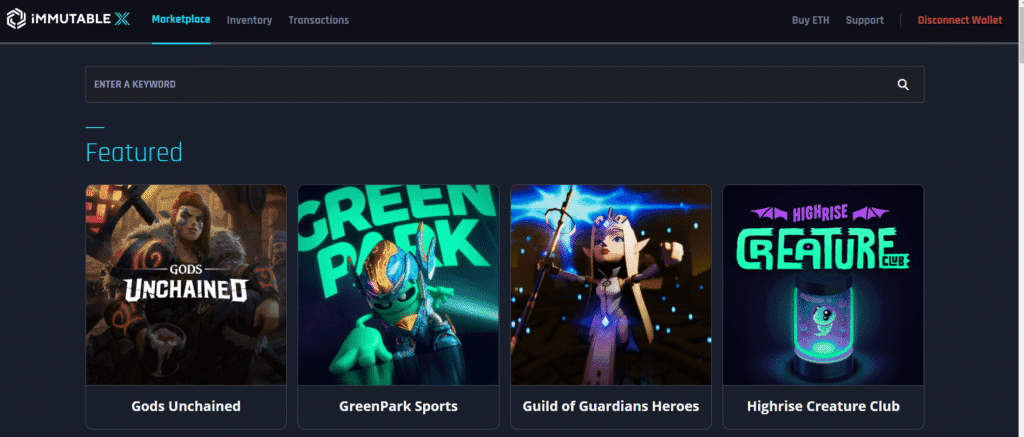
However, third-party marketplace developers need not worry about marketplace trading volume displacement due to Immutable X’s built-in shared global order book and liquidity system. This means that orders placed on one marketplace can be fulfilled on another, allowing for more efficient bootstrapping and price discovery. This also means that Immutable X can be used to create NFT marketplaces without the need for a backend. Immutable believes that allowing NFTs to be traded on many platforms that cater to different types of customers is a significant method to increase their liquidity.
The marketplace supports ERC-721 and ERC-1155, giving users an expanded choice and flexibility in managing their NFT assets. Assets can also be minted using the Immutable X platform. It gives users the ability to create and distribute NFTs on a large scale, and whether they mint a single item or a huge batch, the platform can handle all minting operations for free. These freshly minted NFTs can immediately be listed for sale on the Marketplace.
Immutable X Team
Immutable X is the fruit of a partnership between two significant entities in the blockchain and gaming industry- Immutable and StarkWare. Immutable, previously known as Fuel Games, is an Australian blockchain gaming company founded back in 2018 by James Ferguson, Robbie Ferguson, and Alex Connolly. They are the developers behind the now popular game ‘Gods Unchained’. StarkWare Industries, on the other hand, is a blockchain-scaling-focused company based in Israel created by Eli Ben-Sasson, Uri Kolodny, and Michael Riabzev in 2018.
Immutable X’s IMX Token
IMX is an ERC-20 utility token designed to reward pro-network activities such as trading, liquidity provision, and application development on Immutable X. The token matches incentives between traders, creators, and marketplaces, ensuring that protocol activity benefits all players.
Digital Worlds Ltd. NFTS (the "Foundation") has teamed with Immutable to distribute IMX for usage on the Immutable X protocol. Both these entities take on distinct roles within the project, Digital Worlds functioning as the token issuer will be tasked with the management of both the protocol and the token, whereas Immutable will act as the exclusive service provider developing the Immutable X protocol and token. Moreover, no Immutable director, employee, or Foundation director shall be receiving any tokens directly as remuneration for their services or involvement in the project.
Token Supply and Allocation

Initially, IMX was supposed to be launched with a token supply of 20 million which was later changed to a 2 billion token max supply in October 2021. The allocation of the token supply is split into four main heads
Ecosystem Development - Around 51.74 percent of the total supply is allocated to the development of the ecosystem. These tokens are used to reward the network participants and incentivize third-party developers to use the protocol to launch and develop their projects. There are two main initiatives through which these tokens are distributed.
- Daily Rewards – Users who engage in protocol positive activities like trading, minting, and depositing of assets accumulate points which are used to calculate their share of the network activity. The daily IMX rewards pool will be allocated to users every 24 hours based on their proportional share of all users' total points earned. To guarantee that usage and rewards are aligned with long-term protocol users, two-thirds (66.6 percent) of these daily reward tokens are subject to a six-month linear unlock.
- Developer Grants - Developer grants may be offered to parties interested in working on Immutable X, with milestones set in place to guarantee that developers add value to the protocol. Some funds will be allocated directly by the Foundation, while others will be allocated by the protocol's decentralized governance.
Project Development – Around 25 percent of the total supply is allocated towards the development of the project. Immutable, the blockchain gaming company is the entity in charge of developing the protocol. While no team member or founder shall be paid directly in IMX, these tokens that are allocated can be sold to generate money that fuels the development of the project.
Token Sales - Around 19.26 percent of the token supply is reserved for the public and private sale of the token to investors. Specifically, this 19.26 percent is split into 14.26 percent for private sale and 5 percent of the tokens for public sale. The tokens sold in the private sale are locked for a total of 2.5 years, with a vesting frequency of 28 days that begins after the first year of lockup. The tokens sold in the public sale are locked up for a total of 3 months with a vesting frequency of 28 days that begins from token launch.
Foundation Reserve – Around 4 percent of the tokens are allocated for the ‘Foundation Reserve’. These tokens are to be used by the Foundation to fund ecosystem-related developments and to provide liquidity in centralized and decentralized exchanges.
Token Circulation Schedule
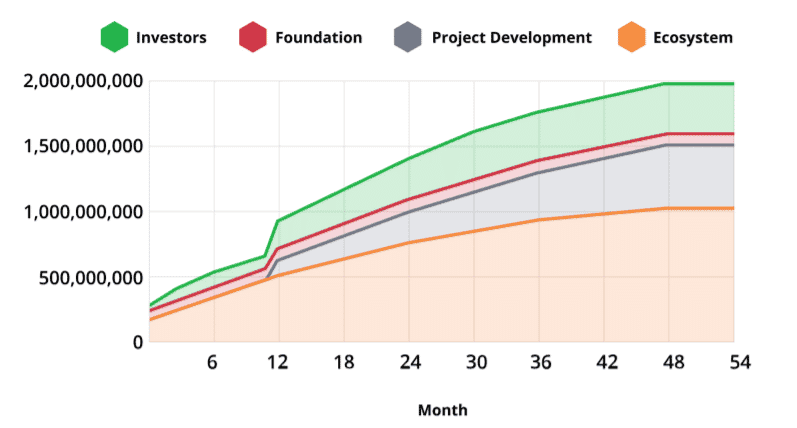
The graph above represents the proposed token circulation schedule, it shows that the IMX token will be fully in circulation in 54 months from launch. The circulating supply of IMX is designed to incentivize long-term growth and sustainability
Token Utility
Currently, the IMX token has three main utility functions- fees, staking, and decentralized governance.
Fees – While it is true that Immutable X is a zero gas fee protocol, it earns its revenue through the collection of a 2% fee from trades executed on the protocol. Around 20% of the protocol fees collected must be paid in IMX. This fee can either be paid directly in IMX, or Immutable will automatically swap the actual purchase currency (e.g. ETH) for IMX on the open market. This means users do not need to explicitly hold IMX tokens to be able to transact on the protocol.
Staking – All the IMX used to pay transaction fees is sent to a staking rewards pool. This pool will be proportionally distributed among users who are currently staking IMX. For your IMX to be considered staked, you must:
- Hold IMX on L1 or L2
- Have voted on a governance proposal in the last 30 days, and
- Either: Be holding an NFT on Immutable X, or have completed a trade in the last 30 days.
This staking structure ensures that holders are actively participating in the protocol.
Decentralized Governance – Token holders are also given voting rights to vote on governance proposals. These proposals cover a range of matters such as how to allocate token reserves, voting on developer grants, activating daily rewards, and changes in token supply. The weight of each holder’s vote depends on the number of tokens he holds.
Price History
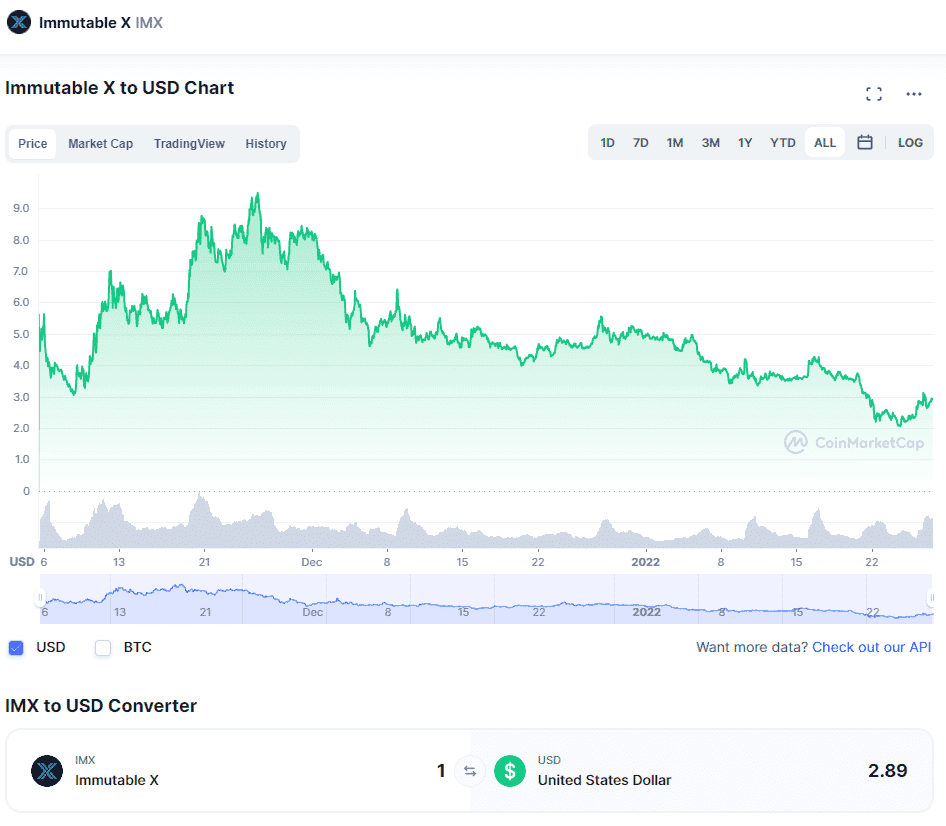
The IMX token is currently trading at $2.89 at the time of writing, this is 69% down from its all-time high of $9.61 in November. Granted of course we must keep in mind that we are currently experiencing an overall downward trend in the crypto market. The IMX token currently holds a market cap of $556 million with a circulating supply of roughly 189 million tokens (i.e., 9% of the total supply).
IMX made its early investors a lot of money as it sold for just between $0.10 to $0.15 in its public sale in September, that’s almost a 20x return at current prices. Personally, I happen to be bullish on the future of Immutable X and its token in the long term as they have a healthy vesting schedule and they facilitate the growth of one of the most important budding ecosystems in the crypto industry- the play-to-earn and NFT ecosystem.
The IMX token is currently available on all major exchanges such as Coinbase, Binance, and Huobi Global.
IMX Play to Earn Program
As a part of rewarding its early backers, a total of 50 million IMX tokens were allocated to participants who fulfilled the eligibility criteria of its ‘play to earn’ program. This involved rewarding early players of Immutable’s NFT Trading-Card game - ‘Gods Unchained’. These tokens are claimable by eligible participants on the platform page of Immutable X. If you’re a long-time player of Gods Unchained head over to see if you’re eligible to claim any!
Projects and Partnerships
Some of the earliest projects and NFT collections launched on Immutable X include Gods Unchained, Moody Krows, Landloot, and AstroBros. The protocol has also seen adoption by commercial entities like Tiktok and Stardust. Due to its API and SDK set, Immutable X can easily be integrated into many existing commercial platforms. This bodes well for the platform as there is already existing interest from social media giants like Facebook and Instagram to venture into the NFT and metaverse ecosystem. Some might speculate that Immutable X could very well be the protocol considered for implementing this vision.
Conclusion
As long as problems exist, there will always be solutions for those problems. Currently, Immutable X happens to be one of the best layer-2 solutions for Ethereum’s high gas fee problem when it comes to NFTs. But with the supposed rollout of Ethereum’s Consensus Layer sometime this year, it remains to be seen how this would affect all layer-2 solutions, not just Immutable X. Nevertheless, if you’re someone who has participated in the blockchain gaming ecosystem, I’m confident that you’ve been frustrated with endless gas costs that you incur from signing all those pesky transactions in the game. This is an issue that stretches far beyond just the Ethereum blockchain, just a few months ago Polygon faced a similar situation because of the Sunflower Farmers game. This is why I see a bright future for Immutable X in the play-to-earn ecosystem at least, regardless of whether Ethereum’s Consensus Layer rolls out or not. As a gamer, Immutable X’s zero gas fee protocol is one offer that’s just too sweet to resist.
Disclaimer: These are the writer’s opinions and should not be considered investment advice. Readers should do their own research.


